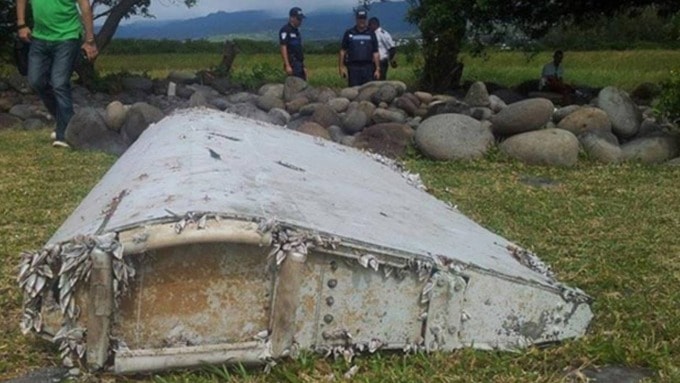Researchers are putting forward many new hypotheses in an effort to find the wreckage of MH370, which mysteriously disappeared more than 10 years ago.

Malaysian Transport Minister Anthony Loke confirmed on December 20 that the country has allowed Ocean Infinity, a company based in Texas, USA, to conduct a new campaign to search for the wreckage of MH370 in a new area with a total area of about 15,000 square kilometers in the southern Indian Ocean.
"We have a responsibility, obligation and commitment to the families of the victims. We hope that this search will yield positive results, identify the plane wreckage and bring closure to the tragedy for the victims' families," said Mr. Loke.
It has been more than 10 years since Malaysia Airlines flight MH370 disappeared on March 8, 2014. The flight carrying 239 passengers from Kuala Lumpur to Beijing disappeared from radar screens less than 2 hours after takeoff.
Military and civilian radar data showed the plane circled the Strait of Malacca and headed straight for the Indian Ocean. After about 7.5 hours of flight, MH370 ran out of fuel, then spiraled downward and plunged into the sea 11 minutes later.
There are many theories about Flight MH370, ranging from hijacking, loss of cabin oxygen to pilot suicide. However, there has been no evidence of mechanical failure, distress calls or ransom demands since the disappearance. The governments of Australia, China and Malaysia have spent about $130 million searching for MH370.
Official investigations have found that MH370 deviated from its planned route to Beijing, instead heading southwest over the Indian Ocean. Based on analysis of signals between the plane and satellites, experts have concluded that MH370 is somewhere off the west coast of Australia.
Numerous search and rescue teams scoured an area of 120,000 square kilometers, but found no clues before stopping in 2017. Ocean Infinity launched two searches for MH370 in 2018, but also found nothing.
But Ocean Infinity is not giving up. Malaysian officials said the company recently submitted a new search plan with “credible leads, based on the research of many experts and considering various perspectives.”
One of them is a 2023 report by three researchers Richard Godfrey, Dr. Hannes Coetzee and Professor Simon Maskell, suggesting that the wreckage of MH370 could be located in the sea about 1,560 km west of Perth, Australia.
The researchers used Weak Signal Radio Propagation (WSPR) technology to develop their theory of where MH370 crashed. "The technology has been developed over the past three years and the results provide new and credible evidence," the three researchers said.
According to them, the results of the WSPR analysis coincide with the assessment of Boeing and the model of debris drifting in the Indian Ocean conducted by the University of Western Australia.
WSPR is a global network established in 2008, in which amateur radio transmitter operators around the world use software to send low-power signals on medium and high frequency bands to test transmissions.
These weak radio signals can be transmitted to receivers up to 10,000 km away and stored in a giant database called WSPRnet.
When a plane flies through such a weak radio signal, it interferes or disrupts it and is recorded in WSPRnet. Researchers looked at 125 such disrupted signals to try to determine MH370's flight path over the six hours since its last radio contact.
“Think of WSPR as a network of radio tripwires,” says Simon Maskell, professor of autonomous systems at the University of Liverpool in the UK. “Those tripwires can be triggered when aircraft pass by.”
Professor Maskell has also been applying WSPR technology in joint research with Richard Godfrey, a retired aerospace engineer, in the search for MH370 over the past decade. They believe that unusual traces in the WSPR data after MH370 disappeared will help experts narrow down the search area for the plane.
“There are many others who don't believe this, and we now have to try to determine who is right,” Maskell said.
In addition to WSPR, some experts are also approaching other technologies in an effort to solve the mystery of MH370.
Dr Usama Kadri, a mathematician at Cardiff University in the UK, believes hydroacoustics could help provide clues about where search teams should focus their efforts.
He analyzed more than 100 hours of data from Comprehensive Nuclear-Test-Ban Treaty Organization (CTBTO) hydroacoustic stations, looking for signs of 10 historical plane crashes and a missing submarine.
To help find MH370, Kadri focused on acoustic data from stations at Cape Leeuwin in Western Australia and Diego Garcia, an island in the Indian Ocean. Both stations were within range of the sound waves and pressure changes in the ocean at the time MH370 crashed.
Large impacts on the ocean, such as a plane crash, create distinctive sound waves. Hydroacoustic equipment has detected signals from plane crashes and earthquakes more than 5,000 kilometers away. "Sound can travel very far in the ocean," Kadri said.
He added that sonar equipment is very sensitive, so a major impact such as a plane crash could leave a clear signal. However, he acknowledged that “the ocean is a very noisy place” and there could be a lot of noise from waves or marine life that could obscure the signal from MH370.
In addition to the crash site, Kadri said it was equally important to determine how the plane hit the water. His research showed that if the plane hit the water hard, the acoustic signals would be recorded more easily than if it landed on its belly.
While sonar may be a promising method for detecting a missing plane, Kadri was unable to find a signal with the confidence needed to warrant a new search. He acknowledged the mystery remains unsolved, but suggested that the explosions might provide some clues.

On November 15, 2017, the Argentine submarine ARA San Juan went missing during an exercise with 44 sailors on board. Experts at CTBTO stations noticed unusual signals recorded by hydroacoustic equipment indicating that there may have been an explosion under the sea.
The Argentine Navy then dropped explosives from the air over the submarine’s last known location. The signal from this controlled explosion was similar to an anomalous signal recorded hours after the submarine disappeared. A year later, search teams discovered the wreckage of the San Juan 20 kilometers from the anomalous signal. None of the 44 crew members survived.
Kadri's theory is that experts could conduct similar controlled explosions in the area where MH370 is believed to have last been. "The idea is to release the amount of energy that we believe MH370 would have generated as it crashed into the ocean," he said.
If the signals recorded from the explosion match previous findings, this could strengthen the theory of MH370’s crash site. If the signals do not match, searchers will need to reassess the time frame or location they have previously searched.
However, such explosions are expensive and require specialized equipment, and can be environmentally damaging, so the research may need to be approved by the Malaysian government before it can proceed, according to Kadri.
Kadri argues such experiments could help develop the use of sonar technology as a tool to help narrow down searches for future plane crashes.

Other teams are trying to find clues from marine crustaceans. A large piece of debris washed up on a beach in Saint-Denis on Reunion Island in the western Indian Ocean in late July 2015. Experts later confirmed it was a flaperon from MH370.
“The barnacles were attached to the flaps of the plane. As soon as I saw them, I emailed the investigators because I knew the composition of their shells could provide clues to the crash site,” Gregory Herbert, a geoscientist at the University of South Florida, said in August 2023.
Scientists say the composition of each barnacle shell reflects the temperature of the seawater at the time it was formed. They believe the largest barnacles may have attached themselves to the MH370 debris shortly after the crash and that analysing their shell composition could lead search teams to the correct location.
Oliver Plunkett, chief executive of Ocean Infinity, said that after two failed attempts in 2018, the search for MH370 was on their minds, motivating the company not to give up hope of solving the mystery.
This search campaign will be carried out by Ocean Infinity on a "no fee if no find" basis, meaning they will only receive $70 million if the plane wreckage is found.
"We have a responsibility, an obligation and a commitment to the families, especially the next of kin of the passengers, that the government will continue this search," Malaysian Transport Minister Loke said.
VN (according to VnExpress)